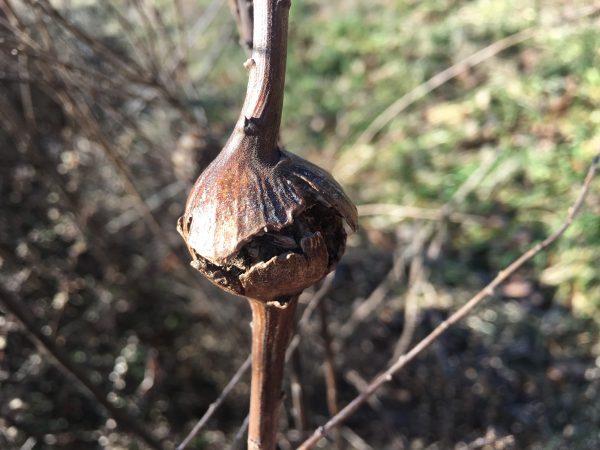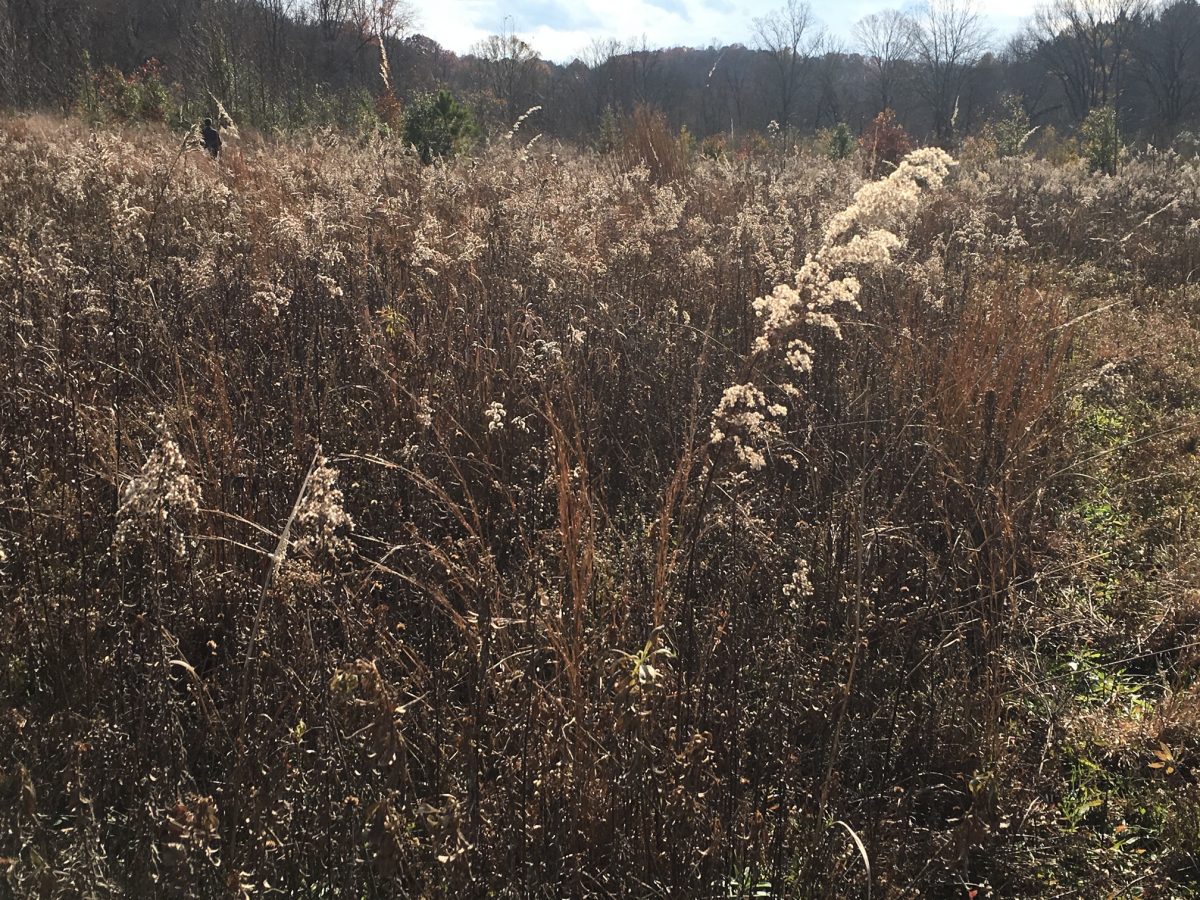Finding the exceptional in the ordinary: Goldenrod galls

Mama has a knack for finding four-leaf clovers. We’ll be strolling along, chatting, and she’ll stoop down and pluck one. She doesn’t break stride to stop and search – they just jump out at her.
She doesn’t focus on finding the oddity. Instead, she takes in the sameness of the masses until something different catches her eye.
I’ve tried her approach, but I still fail miserably with four-leaf clovers. I guess I didn’t inherit the luck of the Irish. But I have trained my eye to pick out goldenrod galls among the millions of stems in our early successional habitat in the Uwharries, roughly halfway between Charlotte and Raleigh.
Our stands of native warm-season grasses are riddled with wildflowers (also known as forbs or herbaceous perennials) such as tickseeds (Coreopsis sp.), sunflowers (Helianthus sp.) and goldenrods (Solidago sp.). The goldenrods maintain an elegant presence long after their late blooms have faded, especially when their seedheads are backlit by a low winter sun. Once their withered leaves have dropped, the bare stems make it easy to spot intriguing knots called galls.

Goldenrod seed heads in the fall. Photo: Ruth Ann Grissom
The goldenrod gall fly (Eurosta solidaginis) is responsible for creating these round, marble-sized balls. The female deposits her eggs in spring when the stem is tender and green. The larvae quickly hatch and munch their way into the stalk. Their saliva contains enzymes that stimulate plant growth, forming the thickened mass. The larva holes up for the winter, snug in its case.
If all goes according to plan, the larva will pupate in spring and emerge from the gall. According to Jon Storm, biologist at USC Upstate and keeper of the outstanding Southern Piedmont Natural History page, it does so by inflating a balloon-like structure on its head. This opens the outer layer of a tunnel the larva partially excavated before the gall dried and hardened.
Of course, clever predators have devised ways to access these protein packets. A parasitoid wasp sometimes deposits an egg in the same gall. When the fly larva pupates, the developing wasp eats it. (The wasp is a parasitoid because true parasites don’t kill their host.) Birds, notably chickadees and downy woodpeckers, attack the galls from the outside. The gall proves no match for their beaks.
Studies have shown that wasps tend to select smaller galls, while birds prefer larger ones. The relative size of the galls present in a given area can be an indicator of which predator is more prevalent.
Less frequently, I find elongated galls. These are produced by the goldenrod gall moth (Gnorimoschema gallaesolidaginis). Renowned Piedmont naturalist and bird bander Bill Hilton Jr. wryly notes that its scientific name is “quite a bit longer than its body.”
The moths lay their eggs in the fall, and they overwinter on a protected lower leaf. The eggs hatch in spring as new growth emerges, and larvae enter the stalk. They pupate over summer and emerge as adults in fall, leaving behind empty chambers that can then be occupied by small spiders and insects.
Both species depend on a full year to complete their life cycle, so they can’t survive in fields that are mowed or burned on an annual basis. Our land management likely impacts their populations more than songbirds or wasps.
I don’t see these creatures in the field we burn every year, but there’s very little goldenrod in there. (It has become an almost pure stand of big bluestem, but I’m glad to report that patches of common milkweed seem to be thriving.)
We burn our other fields on longer rotations – every two to five years. Based on my casual observations, the galls seem to cluster in different areas from year to year. Perhaps that has something to do with our management. I imagine we’re both helping the populations of goldenrod gall flies and moths, but also keeping them in check.
It’s a reminder that we are an inextricable part of nature, and our actions have consequences. To fully appreciate that, the first step is to pay attention, taking in the mundane and remaining open to the exceptional.